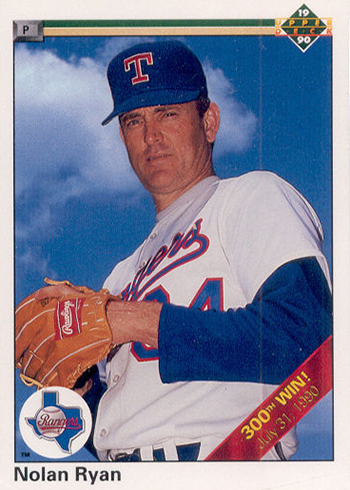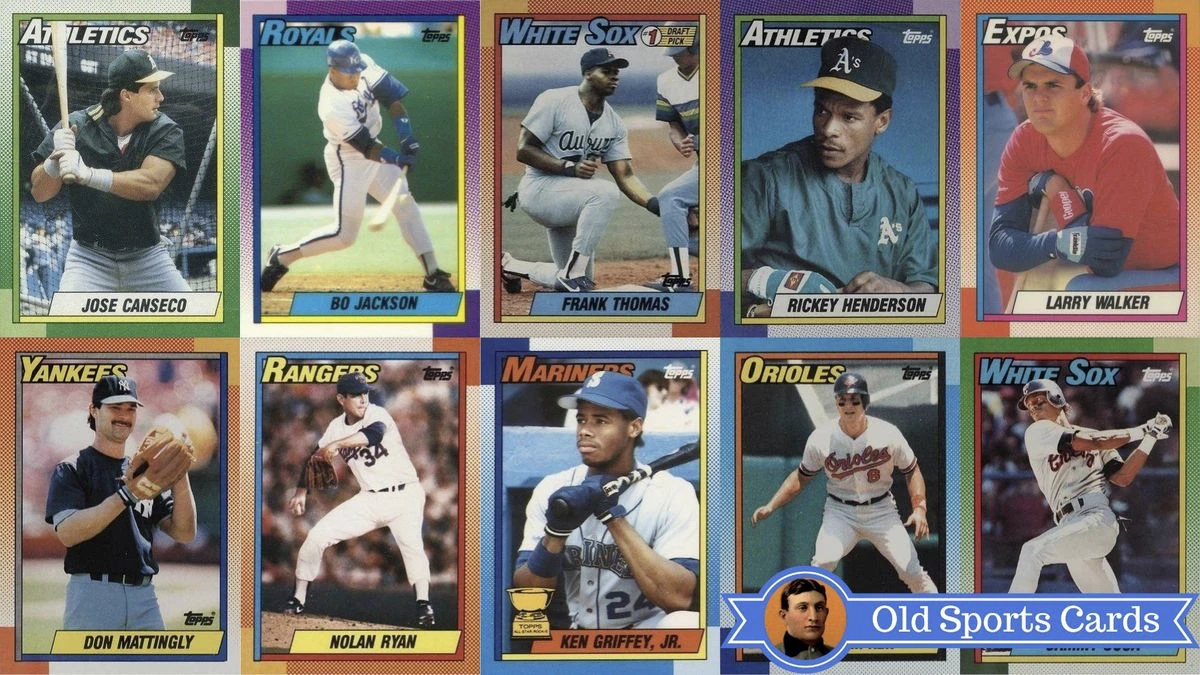Baseball cards from the 90s hold a special place in collectors’ hearts. They represent a nostalgic era and can be quite valuable today.
During the 90s, baseball cards were incredibly popular. Many collectors bought packs, hoping to find a gem. Some of those cards have appreciated in value over time. The thrill of discovering a rare card kept collectors coming back for more.
Today, these cards are sought after for their historical significance and potential worth. Whether you are a seasoned collector or a newcomer, understanding what makes these cards valuable can be exciting. In this blog, we will explore why certain 90s baseball cards are prized and what makes them stand out. Stay tuned to uncover the treasures from this vibrant decade.

Credit: www.beckett.com
Introduction To 90s Baseball Cards
Baseball card collecting saw a significant boom in the 1990s. This decade brought unique and valuable cards that collectors still cherish today. Whether you’re a seasoned collector or new to the hobby, understanding 90s baseball cards can be both exciting and rewarding. Let’s dive into why these cards hold a special place in the world of sports memorabilia.
The Golden Era Of Baseball Cards
The 1990s are often called the golden era of baseball cards. During this time, card companies introduced various innovations. Holograms, autographs, and limited editions made their debut. These features added a new level of excitement for collectors. The designs became more creative and detailed. This made the cards more appealing.
Players from this era also contributed to the cards’ popularity. Stars like Ken Griffey Jr., Derek Jeter, and Chipper Jones became household names. Their rookie cards are now some of the most sought-after items. Collectors from all over the world look for these gems. The 90s brought a mix of artistry and star power to the baseball card scene.
Why 90s Cards Are Special
90s baseball cards stand out for several reasons. First, the introduction of unique features like holograms and autographs made the cards more valuable. These additions were new and exciting for collectors. They added a sense of rarity and exclusivity.
Second, the quality of the cards improved. Card stock became sturdier, and printing techniques advanced. This meant the cards lasted longer and looked better. The artwork and photography also saw significant upgrades. Collectors appreciated the enhanced visuals and attention to detail.
Lastly, the 90s era featured many iconic players. Collecting cards of legends like Barry Bonds and Frank Thomas brought a sense of nostalgia. These players left a lasting impact on baseball. Their cards serve as a reminder of their greatness and the excitement of the 90s.
Top Valuable Baseball Cards
Baseball cards from the 90s hold a special place in the hearts of collectors. Among these, some cards stand out due to their rarity and value. Let’s explore the top valuable baseball cards from this era. These cards not only bring back memories but also promise potential investment returns.
Ken Griffey Jr. Rookie Card
The Ken Griffey Jr. Rookie Card is a prized possession for many collectors. Released in 1989, it quickly gained popularity. By the 90s, it became a symbol of baseball card collecting.
- Brand: Upper Deck
- Year: 1989
- Estimated Value: $1,400
This card features a young Griffey, showcasing his potential. Many collectors still seek it today. Its value has steadily increased over the years.
Derek Jeter Rookie Card
The Derek Jeter Rookie Card is another gem from the 90s. Jeter, a Yankees legend, made a significant impact on the game. His rookie card is highly sought after.
- Brand: Upper Deck SP
- Year: 1993
- Estimated Value: $700
This card features Jeter in his early days with the Yankees. Collectors prize it for its association with one of baseball’s greats. Its value reflects Jeter’s legacy in the sport.
Factors That Influence Value
Understanding the factors that influence the value of baseball cards from the 90s can help collectors make informed decisions. Knowing what makes a card valuable will assist in building a worthwhile collection.
Player Performance
The performance of a player has a significant impact on a card’s value. Players who have achieved great milestones tend to have higher value cards. Rookie cards of legendary players are particularly sought after. A player’s career achievements and popularity can drive up the demand. Fans and collectors often pay a premium for cards of their favorite stars. If a player is inducted into the Hall of Fame, their card’s value can increase dramatically.
Card Condition
The condition of a card is crucial in determining its value. Cards in mint condition are highly prized by collectors. Even minor flaws can significantly reduce a card’s worth. Common issues include bent corners, scratches, and fading. Cards that have been well-preserved fetch higher prices. Grading services provide an official condition rating which can boost a card’s market value. A card graded as ‘Gem Mint’ will be worth significantly more than a lower-graded card.

Credit: www.reddit.com
Grading And Authentication
Grading and authentication are crucial for determining the value of baseball cards from the 90s. Professional grading ensures the card’s condition is accurately assessed. Authentication verifies the card’s legitimacy. Together, they provide buyers and collectors with confidence in their investments.
Importance Of Professional Grading
Professional grading plays a key role in assessing a card’s condition. A higher grade often means a higher value. Grading companies use strict criteria to evaluate cards. They look at factors like corners, edges, surface, and centering. Even small flaws can impact the grade. This meticulous process helps maintain a consistent standard across the hobby.
Collectors trust graded cards more. An ungraded card might hold hidden flaws. A graded card provides a clear picture of its condition. This transparency can increase a card’s marketability. Serious collectors usually prefer graded cards. It simplifies buying and selling by removing guesswork.
Top Grading Companies
Several companies are renowned for their grading expertise. PSA (Professional Sports Authenticator) is one of the most respected. They have graded millions of cards. Their grading scale ranges from 1 to 10. A PSA 10 is a gem mint card. It represents the pinnacle of quality.
Another leading company is Beckett Grading Services (BGS). They are known for their detailed sub-grades. BGS evaluates corners, edges, surface, and centering separately. This detailed approach appeals to many collectors. BGS also uses a 1 to 10 scale.
SGC (Sportscard Guaranty) is also highly regarded. They have been grading cards since the late 90s. SGC is known for their consistent grading standards. Their black holders provide a unique look. Many collectors appreciate this distinctive style.
Choosing the right grading company depends on personal preference. Each has its strengths. PSA is known for its market presence. BGS offers detailed sub-grades. SGC provides consistent grading and unique holders. Consider these factors when deciding where to grade your cards.
Where To Find Valuable Cards
Baseball cards from the 90s hold significant value today. Collectors and enthusiasts are always searching for these hidden gems. So, where can you find valuable baseball cards from the 90s? There are several places to look. This section will guide you to some of the best sources.
Online Marketplaces
Online marketplaces are a great place to find valuable baseball cards from the 90s. Websites like eBay and Amazon host numerous listings. You can browse through a wide range of cards. Make sure to read the descriptions carefully. Check the seller’s ratings and reviews to ensure reliability. Other online platforms like Etsy and Craigslist also offer baseball cards. These platforms may have unique finds. Be diligent in your search and compare prices.
Card Shows And Conventions
Card shows and conventions are excellent venues for finding valuable cards. These events gather many collectors and sellers in one place. You can see the cards in person and inspect their condition. This helps in making informed decisions. Card shows often feature rare and unique cards not found online. Check local event listings or hobby stores for upcoming shows. Attending these events can lead to great discoveries.
Tips For Collecting
Collecting valuable baseball cards from the 90s can be an exciting hobby. It takes knowledge and care to build a great collection. Following a few key tips can help you succeed.
Identifying Rare Cards
Knowing which cards are rare is crucial. Start by learning about popular players from the 90s. Rookie cards of these players often hold more value. Check for limited edition cards. Look for special features like autographs or unique designs.
Research card brands. Some brands produced more valuable cards. Look for cards in good condition. Avoid cards with creases, stains, or faded colors.
Protecting Your Collection
Protecting your cards keeps their value intact. Use plastic sleeves for each card. Store cards in a cool, dry place. Avoid direct sunlight which can fade the cards.
Consider using binders with protective pages. These keep your cards organized and safe. Handle cards with clean hands to avoid dirt and oil. Regularly check your collection for any signs of damage.
Investing In Baseball Cards
Investing in baseball cards can be a thrilling experience. For collectors, the 1990s was a golden era, with many valuable cards that still hold significant value today. While it may seem like a hobby, investing in these cards can offer substantial returns. Understanding the long-term investment potential and the associated risks and rewards is crucial for making informed decisions.
Long-term Investment Potential
Baseball cards from the 90s can be a good long-term investment. The value of these cards often increases over time. For instance, some cards that were worth a few dollars in the 90s are now worth hundreds, or even thousands of dollars.
Here are some key factors that affect the long-term value of baseball cards:
- Rarity: The rarer the card, the higher the potential value.
- Condition: Cards in mint condition are more valuable.
- Player popularity: Cards of famous players tend to be more valuable.
Risks And Rewards
Investing in baseball cards carries both risks and rewards. It’s important to understand both sides before investing.
| Risks | Rewards |
|---|---|
| Market fluctuations | Potential for high returns |
| Counterfeit cards | Value appreciation over time |
| Storage and preservation costs | Passion and enjoyment |
To mitigate risks, consider these tips:
- Research the market thoroughly.
- Verify the authenticity of cards.
- Invest in proper storage solutions.
By doing so, you can enjoy collecting while potentially reaping financial rewards.

Credit: www.youtube.com
Frequently Asked Questions
What Are The Most Valuable 90s Baseball Cards?
The most valuable 90s baseball cards include Derek Jeter’s 1993 SP Foil Rookie and Chipper Jones’ 1991 Topps Desert Shield. These cards are highly sought after by collectors.
How Can I Identify Valuable 90s Baseball Cards?
To identify valuable 90s baseball cards, look for rookie cards, limited editions, and cards in mint condition. Popular players also add value.
Why Are 90s Baseball Cards Valuable?
90s baseball cards are valuable due to their rarity, condition, and the popularity of the player. Limited editions and rookie cards are especially prized.
Where Can I Buy 90s Baseball Cards?
You can buy 90s baseball cards on online marketplaces like eBay, sports card shops, and at card shows. Always check the card’s condition.
Conclusion
Collecting baseball cards from the 90s can be rewarding. These cards hold history. They bring nostalgia and potential value. Keep an eye on rare cards. Condition and rarity increase worth. Always store cards safely. Research before buying or selling. Enjoy the hobby and its stories.
Happy collecting!





